Search the Community
Showing results for tags 'eduard'.
-
Eduard is to rebox in October 2020 the Trumpeter 1/48th Mikoyan-Gurevich MiG-19S "Farmer-C" kit - ref. Source: http://www.kitreviewsonline.de/eduard-pressekonferenz-in-nuernberg/ V.P.
-
#21/2023 Next one finished by my dad. Eduard Limited Edition kit oob. Painted with MRP Sea Blue. Build thread here https://www.britmodeller.com/forums/index.php?/topic/235129743-kamikaze-killer148-general-motors-fm-2-wildcat-vc-93-usn/ Aircraft of Lt. (jg) Robert Sullivan onboard the escort carrier USS Petrof Bay in the battle for Okinawa, providing CAS, attacking Japanese airfields and destroying potential Kamikaze planes on the ground. DSC_0001 by grimreaper110, auf Flickr DSC_0002 by grimreaper110, auf Flickr DSC_0003 by grimreaper110, auf Flickr DSC_0004 by grimreaper110, auf Flickr DSC_0005 by grimreaper110, auf Flickr DSC_0006 by grimreaper110, auf Flickr DSC_0001 by grimreaper110, auf Flickr DSC_0010 by grimreaper110, auf Flickr DSC_0013 by grimreaper110, auf Flickr DSC_0014 by grimreaper110, auf Flickr DSC_0015 by grimreaper110, auf Flickr DSC_0016 by grimreaper110, auf Flickr DSC_0017 by grimreaper110, auf Flickr DSC_0018 by grimreaper110, auf Flickr DSC_0019 by grimreaper110, auf Flickr DSC_0020 by grimreaper110, auf Flickr DSC_0021 by grimreaper110, auf Flickr DSC_0022 by grimreaper110, auf Flickr DSC_0023 by grimreaper110, auf Flickr DSC_0024 by grimreaper110, auf Flickr DSC_0026 by grimreaper110, auf Flickr DSC_0001 by grimreaper110, auf Flickr DSC_0027 by grimreaper110, auf Flickr DSC_0002 by grimreaper110, auf Flickr DSC_0003 by grimreaper110, auf Flickr
-
#20/2023 Hellcat double completed, after the F6F-3 now a -5N. Eduard Weekend Edition released in 2016. Sadly the fuselage code F(N)4 is oversized, also the fuselage number 21 and the cowl number 88 of the second included scheme are. Funny thing is I´ve seen built up models of "21" using this kit edition with correct sized numbers. Seems there are correct kit tranches and faulty ones. Painted with MRP237 Sea Blue, EZ Line used for antenna wires. Wanted to use leftover PE drop tank straps from the -3 kit. Parts were too soft and didn´t work out. Also the positions of the pre-drilled holes for the straps in the belly were wrong. In the end my dad used plastic stripes for the straps. Build thread here https://www.britmodeller.com/forums/index.php?/topic/235129227-nocturnal-predator148-grumman-f6f-5n-hellcat-vmfn-533-black-macs-killers-usmc/ Model shows the aircraft of Cpt. Robert Baird, the one and only USMC night fighter ace in WW2 who also fought in the Korean War. DSC_0001 by grimreaper110, auf Flickr DSC_0002 by grimreaper110, auf Flickr DSC_0003 by grimreaper110, auf Flickr DSC_0004 by grimreaper110, auf Flickr DSC_0005 by grimreaper110, auf Flickr DSC_0006 by grimreaper110, auf Flickr DSC_0007 by grimreaper110, auf Flickr DSC_0008 by grimreaper110, auf Flickr DSC_0003 by grimreaper110, auf Flickr DSC_0010 by grimreaper110, auf Flickr DSC_0011 by grimreaper110, auf Flickr DSC_0012 by grimreaper110, auf Flickr DSC_0013 by grimreaper110, auf Flickr DSC_0014 by grimreaper110, auf Flickr DSC_0003 by grimreaper110, auf Flickr DSC_0017 by grimreaper110, auf Flickr DSC_0018 by grimreaper110, auf Flickr DSC_0019 by grimreaper110, auf Flickr DSC_0020 by grimreaper110, auf Flickr DSC_0021 by grimreaper110, auf Flickr DSC_0022 by grimreaper110, auf Flickr DSC_0023 by grimreaper110, auf Flickr DSC_0024 by grimreaper110, auf Flickr DSC_0025 by grimreaper110, auf Flickr DSC_0026 by grimreaper110, auf Flickr DSC_0027 by grimreaper110, auf Flickr poor little Zero... DSC_0029 by grimreaper110, auf Flickr DSC_0001 by grimreaper110, auf Flickr engine warming up DSC_0030 by grimreaper110, auf Flickr DSC_0031 by grimreaper110, auf Flickr DSC_0032 by grimreaper110, auf Flickr
-
When I got back into aircraft modelling earlier in the year this was one of the first kits I brought. I had one look in the box and thought, No way! Mainly due to the complex build of the cockpit and the PE. Well, now I have completed 5 other (simpler) models I think I am ready to give it a bash. This is essentially the Arma Hobby Hurricane with some Eduard extras (pe, resin wheels and exhausts) I think. As there are 2 kits in the box, I will do a standard Mk1 in the future, but in this build, I will do a Tropical version. There are 12 marking options in the box, so plenty to choose from. I would like to do the version on the left but no idea how I would do the spray work over the white in 1/72nd. 🤔 My second choice is the Royal Navy Fighter Sqn on the right. Apparently, there is no clarity about the red H and the serial no could be 4244 or 4245. I have pretty much finished my Tractor in the Entropy GB and my Seahawk in the FAA GB is well underway, so I will hopefully start this one in the next few days. George
- 22 replies
-
- 13
-

-
Kit - Eduard (Weekend Edition) Paint - All acrylics Decals - Freightdog Extras - Eduard kit-specific Zoom set. Grumman Hellcat II 800 NAS Trincomalee, Sri Lanka (Ceylon) Autumn 1945. Built this at the same time as the Hurricane I posted here a few weeks ago but only got around to finishing it this morning. Fairly straightforward build, could have done without the separate fin-tip antenna post which was instantly gobbled-up by the carpet monster but that may have been down to 'user error'. Paint is all Tamiya acrylics, as usual mixed by eye. Not too much else to say, very relaxing and rejuvenating project, now ready for something more challenging. Please feel free to comment, question or criticise. Cheers from NZ. Ian.
-
Eduard next limited edition kit will a 1/32nd Curtiss P-40N Warhawk - ref. 11104 Source: https://www.eduard.com/store/out/media/distributors/leaflet/leaflet2017-07.pdf V.P.
-
Time to complete the Hellcat pair by starting this Eduard Weekend Edition. DSC_0004 by grimreaper110, auf Flickr DSC_0005 by grimreaper110, auf Flickr DSC_0006 by grimreaper110, auf Flickr
- 30 replies
-
- 10
-

-
#18/2023 The doublepack naval theme continues, first of two Hellcats by my dad. Eduard Profipack 2008 edition, built oob, added EZ Line for the antenna wire. Painted with MRP Sea Blue, Intermediate Blue and AK RC White. Build thread here https://www.britmodeller.com/forums/index.php?/topic/235128161-pacific-aces148-grumman-f6f-3-hellcat-lt-alexander-vraciu-vf-6-felix-cat-usn/ Alexander Vraciu was born to Romanian immigrants in the US in 1918. He joined the US Navy in 1941 and served as a F6F pilot. He started his career as wingman of Edward "Butch" O´Hare. In December 1944 he was shot down, but could parachute. He then joined Philippine resistnace fighter for five months untilhe could join US forces again. He spent the last months of the war at the Naval Air Test Center in Patuxent, Maryland. In total he was credited with 19 victories, received the Navy Cross, the Distinguished Flying Cross with two Gold Stars, the Air Medal with three Gold Stars, the Presidential Unit Citation with two stars; and the Navy Unit Commendation Ribbon, Vraciu had the Naval Reserve Medal; the American Campaign Medal; Asiatic-Pacific Campaign Medal; World War II Victory Medal; National Defense Service Medal; and the Philippine Liberation Ribbon with two stars. Vraciu died in 2015 at the age of 96. He was most successful with his F6F-3 "Gadget" onboard the USS Lexington in 1944. When this aircraft was withdrawn from service, it somehow survived until after the war, was later restored and brought back to flying condition with parts of other Hellcats and flies now with the Fighter Collection in the UK. DSC_0001 by grimreaper110, auf Flickr DSC_0002 by grimreaper110, auf Flickr DSC_0003 by grimreaper110, auf Flickr DSC_0004 by grimreaper110, auf Flickr DSC_0005 by grimreaper110, auf Flickr DSC_0006 by grimreaper110, auf Flickr DSC_0007 by grimreaper110, auf Flickr DSC_0008 by grimreaper110, auf Flickr DSC_0009 by grimreaper110, auf Flickr DSC_0010 by grimreaper110, auf Flickr DSC_0011 by grimreaper110, auf Flickr DSC_0012 by grimreaper110, auf Flickr DSC_0013 by grimreaper110, auf Flickr DSC_0014 by grimreaper110, auf Flickr DSC_0015 by grimreaper110, auf Flickr DSC_0016 by grimreaper110, auf Flickr DSC_0017 by grimreaper110, auf Flickr DSC_0018 by grimreaper110, auf Flickr DSC_0019 by grimreaper110, auf Flickr DSC_0020 by grimreaper110, auf Flickr DSC_0022 by grimreaper110, auf Flickr DSC_0023 by grimreaper110, auf Flickr DSC_0024 by grimreaper110, auf Flickr DSC_0001 by grimreaper110, auf Flickr DSC_0002 by grimreaper110, auf Flickr DSC_0006 by grimreaper110, auf Flickr DSC_0007 by grimreaper110, auf Flickr DSC_0026 by grimreaper110, auf Flickr
-
Tface Masks for Do.335A, Mosquito B.Mk.IV/PR.Mk.IV & IL-2 (EX946, 938 & 703 for Tamiya) 1:48 Eduard Supplied on a large sheet of yellow kabuki tape, these pre-cut masks supply you with everything you would expect for the exterior glazing, plus wheel masks for good measure, but it also gives you another set of canopy masks tailored to fit the inside of the glazing so that you can paint the model’s interior and give your kit that extra bit of realism. Having used these sets on my own models now, I can confirm that they are extremely accurate, and it's good practice to place the outer masks first to act as a guide for alignment of the inner masks. If you have one of these older kits from Tamiya, which still stand up to scrutiny by modern standards, it’s worth considering an upgrade to the level of detail that the two layers of masking material bring to the cockpit area, which is a focal point of any crewed aircraft, and deserves the additional boost that more realistic masking brings. Dornier Do.335A (EX946 for Tamiya) In addition to the canopy and wheel masks, there is also a single mask for the landing light in the port wing leading edge. de Havilland Mosquito B Mk.IV/PR Mk.IV (EX938 for Tamiya) As well as the canopy and wheel masks, two sets of kabuki tape masks are included for the nose glazing and external masks for the wingtip lights. IL-2 Sturmovik (EX703 for Tamiya) This set is a little older, and suffered from one of the rare instances of things getting lost down the back of beyond. This time, the flat pack got sandwiched inside a book. It’s still available from Eduard however, so if you haven’t already done so, pick one up. Conclusion Given the chance, I will wax lyrical about Tface masks to anyone who will listen, and even though I am quite happy to create my own exterior masks where none are available, I much prefer to use one of these sets when I can. They’re extremely accurate, time saving, and adhere very well to canopies with a little light pressure to burnish them down. Very highly recommended. Review sample courtesy of
-
Eduard is to release a 1/48th Zlín Z-126 to Z-526 Trenér family. Source: https://www.facebook.com/EduardCompany/photos/a.122154977799458/3366784713336452 V.P.
-
Dear fellow Britmodellers, this is my 1/72 Hasegawa Ju-88 D1 in markings of the Romanian Air Force in 1944/45. Painted with Mr.Hobby acrylics, pictures by Wolfgang Rabel. This aircraft belonged to Escadrilla 2 Recunoastere and was based at Miskolc airfield in Hungary, and later at Tri Dubny Slovakia, in the winter of 1944/45. All markings are from the DK decal sheet "Romanian Roundels over Czechoslovakia 1944-1945 (72088)". It apparently changed management when Romania switched sides, because the German crosses, swastikas and squadron codes were hastily painted over. Several aftermarket parts had accumulated in the kit box, including two Eduard sets (interior and exterior), Eduard masks and True Details wheels. Only the canopy paint masks are absolutely necessary - the Eduard interior etched parts can hardly be seen, from the exterior set I only used antennas, landing gear doors and a few other small things, the rest seemed superfluous to me. The Hasegawa kit wheels are pretty good, the True Details resin wheels are a little better and flattened nicely. During painting I noticed that the contrast between Mr.Hobby's RLM70/71 is a bit too strong. I added a small drop of black to the lighter color (RLM71 Dark Green) to soften the contrast. I weathered with artist oils from Winsor & Newton. The nose glazing doesn't fit very well and left a (invisible) gap through which a little spray mist crept in at the edge! Overpainted squadron codes and national insignia .... Now here's the underside ... Thank you for your interest, best greetings from Austria! Roman
-
Sopwith 2F1 Ship's Camel N6818 Do you know the Windsock Datafile 170 about the Ship's Camel? It contains a wonderful big color profile created by Ronny Bar. After Eduard released in June the new kit of the Ship's Camel in 1/48 as part of the new Camel series I had to built it immediately in that livre. As this marking is not part of the ProfiPack offering I had to mask it myself and used only some small stencils from the kit decals. Now it is finished so this is my model number 6 of this year. The last few days I made a wooden platform, and as I was able to finish the Camel today I had a bit of luck with the weather today to take outdoor photos at a lake. The following sets was used: 82173 Profipack Sopwith 2F.1 Camel 648725 Sopwith Camel 2F.1 Lewis gun (only the mounting, as the profile do not show a Lewis MG) 648677 Bentley engine 648660 Vickers Mk.I gun 648659 Camel seat 648674 Rotherham air pumps 3DL48038 Sopwith Camel SPACE The rigging was done using Gaspatch parts: RAF wire terminals and some turnbuckles of Type C. Additionally a lot of scratch work as usual in my projects. The airscrew, the outer struts and parts of the undercarriage are made from wood. Many parts are metal: undercarriage (soldered from brass), tail skid, inner struts, engine bearing and more. A detailed build log can be found at Scalemates. I guess this is one of my best models so far and I'm happy to have it in my collection now. And now have fun with the pics! The mentioned undercarriage: Cheers, Frank
-
Albatros D.V 1:48 Eduard ProfiPACK The Albatros D.III and D.V's were the most numerous fighter in German Service on the Western front throughout most of 1917 and early 1918. They always suffered from structural weaknesses, most notably with the lower wings which were single spar. This provided insufficient strength to withstand some more extreme man oeuvres, and the lower wings could be torn from the fuselage. The D.V was a 'lightened' version of the D.III, with a new fuselage but using the same wings. The same problem with the weak lower wing persisted so a strengthened version, the D.Va, was produced. This resulted in the aircraft being at least 50 kg heavier than the D.V and negated the work done on producing a 'lightened' version. The D.V and D.Va offered no particular advantages over the D.III, with some pilots preferring to stick with the latter. The D.V and D.Va soldiered on until the end of the war as the Fokker D.VII gradually (but not completely) replaced it. It was very widely used, and appeared in a huge variety of colour schemes. Production was done in batches, with either painted or lozenge fabric covered wings. The Eduard kit has been around for a while now, and has been periodically re-released. This newest issue is a 'Profipack' edition with etched brass, kabuki masks, and decals for five versions. The plastic parts are very good, being crisply molded with sharp detail and no flash. Everything is contained on two sprues, with sprue A containing the main airframe parts such as the fuselage, wings, tail, and engine. The fuselage is very well molded with fine detail on the inspection hatches and louvres. One thing to watch out for (and shown in the instructions) is the footstep panel molded on the port fuselage half. It is too far forward and needs to be scraped/sanded off, replaced further back on the fuselage with the etched part as shown. The wings have a lovely rib and fabric effect that looks very good under a coat of paint. The lower wing is full span, and fits into a recess in the lower fuselage, with pre set dihederal. The Mercedes D.III engine has good basic detail, but not much more than the top of it will be seen onece installed. If you decide to cut away one or both of the top cowling panels, it provides the perfect basis for super detailing. Sprue B holds all the smaller components such as the interior fittings and wing struts. There is some very fine molding here, so care is needed when removing parts from the sprue. Solid plastic LMG 08/15 Spandaus are provided, which can be used 'as is', or for the more advanced modeller the barrels can be cut off and replaced with finely slotted etched versions. I have built quite a few of Eduards D.V/D.Va kits over the years, and can vouch for the fact that they are virtually fault free in assembly, and require little or no filler. Etched fret. This contains a large variety of finely detailed parts, with the seatbelts, instruments, and instrument boards being pre-coloured. Not all parts will be required, as some such as the footstep panels are alternative styles, and others are applicable to the D.V or D.Va, but not both. It is however a very comprehensive set of details to apply to the model as appropriate. Masks. These are largely for option D, the Jasta 5 machine that has a green tail group outlines in red. This can be difficult to paint accurately, but these masks for the green are will make light work of adding the red outlines. The smaller mask sheet gives items for masking the wheel hubs when painting the tyres, and some small elements to mask the inspection hatches on the fuselage. Both sheets are die cut on Kabuki tape. Options. These are a superb choice of different Alabatri, covering a good selection of simple and more complex finishes, from overall black to wooden fuselages,with lozenge fabric or painted wings. Options A to D are all D.V's while option E is a D.Va. Option A. Albatros D.V, 2299/17 ,Oblt. Bruno Loerzer, Jasta 26, autumn 1917. Option B. Albatros D.V, Ltn. Georg von Hantelmann, Jasta 15, early 1918. Option C. Albatros D.V, 2283/17, Ltn Otto Kissenberth, Jasta 23b, summer 1917. Option D. Albatros D.V, Oblt Richard Flashar, Jasta 5, July 1917. Option E. Albatros D.Va, 7161/17, Jasta 46, early 1918. (this machine is preserved in the Smithsonian, in Washington) Decals. A very comprehensive set of decals is provided. The smaller sheet contains all the individual markings for each options, such as Hantelmanns skull & crossbones, Kissenberths Eidelweiss, and Flashars red dragon. All are beautifully printed, with good colours and minimal carrier film. The 2 larger sheets are for the upper & lower lozenge camouflage, with another sheet of blue and pink rib tapes. Lozenge colours are always a contentious area, with plenty of opinions as what is correct. The underside ones seem a little bright, so I would be tempted to tone them down a little with an airbrushed 'glaze' of Tamiya 'smoke' , similar to what was sometimes done on the real aircraft in service. Ultimately it is down to personal choice. Conclusion. This builds easily into a lovely little model straight from the box. There is a modicum of rigging to be done, but it is fairly simple. All five of the marking options on offer deserve to be built, (without even considering what the aftermarket decal producers offer), so it probably makes sense to get a few of these kits. Review sample courtesy of Footnote. I like this kit so much that over the years I have built at least ten of them, and still have four more waiting in the stash, including a couple of the original Profipack boxings. I do think that the undercarriage legs are a little short and can be improved by lengthening them. Keeping them spaced on the sprue, I cut the lower 'U' shape off, and inserted a couple of 3mm lengths of plastic strut material to each leg, and then re-attaching the 'U' shape to them. The reason for keeping them on the sprue is to maintain the spacing of the upper ends, where they will attach to the fuselage. The new sections on the lower end will be concealed under some thread wrapped around to represent the bungee cord, as well as by the wheels themselves. The difference is subtle, but for me is worth doing as it improves the 'sit' of the model. Notice the distance between the leading edge of the lower wing, and the top of the wheel. Top: unmodified, Bottom: modified. A further point to note is the difference between the D.V and the D.Va. These are provided for in the kit & instructions, but could do with being made clearer. The D.V had aileron cables that ran inside the top wing, using the etched control horns PE15 & PE36. It did not have the cables marked in red below (both sides, I've only marked 1 side). It also lacked the little reinforcing strut on the main 'V' struts, so these must be cut off (This is clearly shown in the instructions). The D.Va had the reinforcing strut, but its aileron cables ran through the bottom wing, emerging behind the 'V' struts to run up to the ailerons on the top wing (marked on one side in red below). put the lines in and do not use parts PE15 & PE36. Did I mention that this is one of my all time favourite kits? Here are a few I have built over the years.
-
Hi Gang, After some deliberation have decided that I will be building an Eduard Grumman Hellcat Mk.I (F6F-3) in 1/48th Scale So far have got a Techmod Decal set for the aircraft and am planning to use the scheme for 800 Naval Air Squadron aboard HMS Emperor in September 1944, I fancy doing an aircraft with the Invasion Stripes in the Extra Dark Sea Grey/ Dark Slate Grey/ Sky scheme. Am off on my hollibobs next week so the build will begin when I return. I intend picking up one of the new Eduard Brassin Look Instrument Panels, some Eduard Resin Tyres and a set of Master Brass Barrels for the aircraft too. Many regards Matt
- 51 replies
-
- 12
-

-

Eduard A-1H Seat PRINT (648842 for Tamiya) 1:48
Mike posted a topic in Aftermarket (updates/conversions)
A-1H Seat PRINT (648842 for Tamiya) 1:48 Eduard Brassin Tamiya’s Skyraider kits are products of the last millennium, which is surprising, because they are still excellent kits, and the de facto standard for the type and scale, with no likelihood of anything coming along to usurp it. Although this set arrives in a flat package, the directly 3D printed parts are safe inside a clear plastic clamshell box inside the package to prevent the parts from rattling about. The part is printed resin, attached to the base via thin tendril-like fingers that are easy to cut off and sand the little upstands away, leaving it ready for action. Consisting of just one part, it represents a highly detailed rendition of the Skyraider’s seat, complete with riveted front, and back cushion with piping around the edge. The attachment point for the seatbelt is also present, giving the belts a realistic location that grounds them in reality. The four-point belts are draped over the seat base and back, curled around with their furniture visible as if they had just been left there by the pilot, eager to get to the mess for a top up on his own fuel tank. Preparation involved nipping the support tendrils off the back of the seat, then filing the remaining bumps flush with the surface, after which the seat is ready for painting and installation. Conclusion The detail is fantastic, and even though the belts are curled around, they should be easy enough to paint with a good quality brush and some patience. Highly recommended. Review sample courtesy of -
#17/2023 Besides all the US naval stuff by my dad, he decided to turn Japanese a bit. New Eduard kit, a bit over-engineered, lots of detail but also many small plastic and PE parts. Fuselage to wing fit had some tension and needed work. Engine mount is fragile and you have to pay attention for perfect alignement. When the model was already finished, had to remove the prop and some engine parts to get it centered in the cowl opening, sat too low before. Built it up first in Japanese livery with the kit Hinomarus and painting it with Tamiya XF-70 and -71, used Risig Decals for the rest of the markings and overpainted all with AK Real Color Flat White with the original markings still shining through lightly. Build thread here https://www.britmodeller.com/forums/index.php?/topic/235127899-surrender148-mitsubishi-a6m3-type-22-ijnrnzaf/ This aircraft was captured by NZ forces on Bougainville. Had been damaged by allied bomb attacks earlier. Brought back to flying condition, painted in the white "surrender" scheme and shipped back to New Zealand. Later restored to its original livery and resides now in the Auckland War Memorial Museum. Full story here https://j-aircraft.com/walk/robert_montgomery/auckland_war_memorial_a6m3.htm DSC_0001 by grimreaper110, auf Flickr DSC_0002 by grimreaper110, auf Flickr DSC_0003 by grimreaper110, auf Flickr DSC_0004 by grimreaper110, auf Flickr DSC_0005 by grimreaper110, auf Flickr DSC_0003 by grimreaper110, auf Flickr DSC_0006 by grimreaper110, auf Flickr DSC_0009 by grimreaper110, auf Flickr DSC_0005 by grimreaper110, auf Flickr DSC_0012 by grimreaper110, auf Flickr DSC_0013 by grimreaper110, auf Flickr DSC_0014 by grimreaper110, auf Flickr DSC_0015 by grimreaper110, auf Flickr DSC_0016 by grimreaper110, auf Flickr DSC_0017 by grimreaper110, auf Flickr DSC_0020 by grimreaper110, auf Flickr DSC_0022 by grimreaper110, auf Flickr DSC_0023 by grimreaper110, auf Flickr DSC_0024 by grimreaper110, auf Flickr DSC_0025 by grimreaper110, auf Flickr DSC_0026 by grimreaper110, auf Flickr DSC_0027 by grimreaper110, auf Flickr DSC_0028 by grimreaper110, auf Flickr DSC_0029 by grimreaper110, auf Flickr
-
Mi-8MT Seatbelt & Zoom! Update Sets (FE1341 & FE1340 for Zvezda) 1:48 Eduard The Hip has received a little attention from the model companies recently, and that’s no bad thing as she was poorly served in 1:48 until now. Eduard's new range of sets are here to improve on the kit detail in the usual modular manner. Get what you want for the areas you want to be more of a focal point. As usual with Eduard's Photo-Etch (PE) and Mask sets, they arrive in a flat resealable package, with a white backing card protecting the contents and the instructions that are sandwiched between. Interior Zoom! (FE1340) A single nickel-plated and pre-painted fret is included in this smaller version of the usual Eduard package. This set contains a subset of the larger sets, namely the pre-painted parts that are used to improve on the main aspects of the cockpit, involving a complete set of new layered instrument panels, sidewall details, and side consoles with added levers for the cockpit, and a visor skin above the pilots’ heads. The round-topped cabin door is removed, as are the moulded-in raised instrument panel details that are being replaced, adding a double set of traffic-light indicators for the passengers that may be leaving either vertically or via the rear ramp. Finally, there is a layered panel that is sometimes fitted where the cabin fire extinguisher is normally sited near the side door. Seatbelts STEEL (FE1341) These belts are Photo-Etch (PE) steel, and because of their strength they can be etched from thinner material, which improves realism and flexibility in one sitting. Coupled with the new painting method that adds perceived extra depth to the buckles and other furniture by shading, they are more realistic looking and will drape better than regular brass PE. You get two full sets of four-point crew belts for the pilots in the forward cabin in this set, complete with quilting details and comfort pads underneath the lap belts that keep the buckles from causing the pilots any discomfort. Review sample courtesy of
-
F4F-4 Gun Bays (648853 for Eduard) 1:48 Eduard Brassin We’ve reviewed the superb new tool F4F-4 Wildcat from Eduard recently here, and I’ve even built one of the earlier F4F-3s here, so can testify to its excellence as a model kit. Just when you thought you could get your wallet back out safely, along comes another 3D printed resin set that will blow your socks off, if you’re even bothering wearing them any more due to the number of times they keep getting removed by each release. As good as the base kit is, you can always increase the level of detail over and above what’s achievable using injection moulded styrene, and this set proves that without question. As is now usual with Eduard's larger resin sets, it arrives in a shallow Brassin cardboard box, with the resin parts safely cocooned in bags, and with the thick instructions folded around acting as padding. The parts are printed resin rather than the usual poured cast resin, so are attached to their print-bases via thin tendril-like fingers that are easy to cut off and sand the little pip-like marks away, leaving them ready for action. There are two bags of 3D printed resin parts and one containing a large fret of Photo-Etch (PE) brass, and you’ll need to do a little simple surgery to the wing parts of your kit, excising the bay cover panels, plus opening up the shell-ejection chutes and narrow access panels from the lower wings before you start. There is also a 1:1 template for you to mark out the interior of the upper wing so that you can thin the styrene by 0.6mm in preparation, which will have the positive side-effect of making the edges of the open bays a more realistic thickness, as well as shortening the spar to accommodate the bays. Each bay is built in mirror image, starting with the main body of the double inner bay, which has two small PE parts fitted into in the wall. The two resin guns are inserted barrel first through the holes in the front of the bay, gluing the breeches to the bay floor via slots and tabs. The ammo feeds are then laid over the tops of their location, followed by the ammo boxes from underneath later in the build. The process is repeated in a simplified fashion for the outer bay, which holds the extra machine gun that was added to improve firepower, with the moulded-in ammo feed disappearing downward. A link between the inner and outer bay is first fixed to the inner where the ammo boxes fit, then the outer bay is joined, with another area for the ammo that feeds the outer gun. The extended bay can then be inserted between the wing halves and everything glued in place, closing the wing around the bays, then adding the lip around both sides using the PE framing parts. The PE bay covers have another layer added to the centre, leaving the edges thinner, and looking like they should fit into the open bays. These are either laid on or near the aircraft, or folded forward non the top surface. This is by nature of the additional .50cal guns a more involved set than the early mark, but the instructions give the impression that lessons have been learned in simplifying the process. Conclusion The detail on these sets is phenomenal, and if you’re not wedded to having all your models buttoned up and ready for flight, they add tons of visual interest to your model. Highly recommended. Review sample courtesy of
-
Anson Mk.I Guns & Lewis 97 Magazines (648844 & 648861) 1:48 Eduard Brassin PRINT We reviewed the newly tooled 1:48 AVRO Anson from Airfix here last year, and it’s a great kit that has made many WWII modellers very happy. Eduard’s new Brassin PRINT sets brings superb detail to the light armament that the Anson sometimes carried, despite it not being a combat aircraft, and that armament is how Faithful Annie achieved its only kill of WWII, when a brave gunner took out a Bf.109 in a lucky/gutsy attempt to keep the enemy from downing the aircraft he was in. There are two sets, one provides the three Lewis guns that were fitted in various locations around the airframe, the other provides extra magazines to fill the racks near the mounts for reloading purposes during a fight or weapons training. Both sets arrive in clear-fronted Brassin vacformed boxes, with the header card and instructions at the rear, whilst the 3D printed resin parts inside are safely stored inside a crystal-clear plastic clamshell box that sometimes has a sticky pad in the bottom to prevent the parts from rattling around the little box. Anson Mk.I Guns (648844 for Airfix) Printed on three bases, there are three incredibly well-detailed Lewis guns and one barrel for fuselage mounting, all of which far outstrip the finesse of the kit parts, and include their mounting posts, plus a half-dozen magazines, none of which will be needed to arm the guns in their emplacements. The small Photo-Etch (PE) sheet contains a vane sight for one of the weapons with a spare, and each gun mounts on the styrene parts from the kit, removing one kit gun that is moulded into its mount, and drilling out two 1.1mm holes to accept the uprights. Lewis 97-Cartridges Ammo Magazines (648861 for Airfix) This set contains one printing base that holds a dozen additional magazines for either your Anson model, or any other Lewis gun installation that accepts the ‘dinner plate’ style magazines, which all have their grab-handles printed integrally, just needing painting a red brown colour to represent leather. Conclusion The detail alone will bring extra realism to your model, with finer barrels and sighting equipment, with more detail squeezed into every square millimetre of the surface. Very highly recommended. Review sample courtesy of
-
Hi Please see attached some photos of my recent spitfire, built from the excellent Eduard weekend kit, with some spare photo etch added. The decals are from Vingtor, representing an aircraft from 332 squadron, 1943, being flown by several Norwegian pilots. Not much to say about the kit, it goes together like a dream.
- 10 replies
-
- 38
-

-

-
Dear fellow Britmodellers, here's my 1/72 Italeri SM.82 Canguro, built from the box, with Italian Kits decals. Pictures by Wolfgang Rabel. Originally released in 2009, the Italeri model is the only injection-moulded kit of this interesting transport aircraft. The tooling quality does not meet today's standards, with chunky small parts, and ill-fitting larger components such as fuselage and wings. I used Eduard paint masks for the numerous side windows and cabin glazing, and added Italian Kits decals (IK 72003) to represent an aircraft of Transportgruppe 110 in late 1944. I painted with Mr.Hobby acrylics. Interior details of the cargo hold.... ... and the cockpit, where I added seatbelts from Tamiya tape ... Thank you for your interest.
-
@Stephen started his GB build thread for a Beaufighter VII using markings from a Blackbird Models sheet, Operation Overlord Pt:1. I noticed markings for a Lysander were also on that sheet. With Eduard's reboxing of the Gavia plastic in my stash, and a quick trip through the ether to Sprue Brothers to secure that decal sheet, I'm ready to begin! While I originally bought the kit for the 309 Squadron (Polish) markings shown on the box art, this GB is an even better topic. This kit is the Gavia plastic with new bits from Eduard, including the instructions and decals shown here. And here are Eduard's PE, resin, and masks Gavia's plastic and Fair warning, it will be something of a record if I do complete within this GB's span. BTW, living in Southern California, a mag 6.4 earthquake hit about 180 mi NE of me (near NAWS China Lake) as I sat down to start this thread. As of this moment, the largest shock was 6.4, with 45 fore- and after-shocks so far. Given the distance, the temblor was felt as a rolling motion in my home, causing hanging fixtures to gently sway.
- 90 replies
-
- 7
-

-
Bf.109F-4 Weekend Edition (84188) 1:48 Eduard The Bf.109 needs little introduction, suffice to say that it was the Luftwaffe’s mainstay frontline fighter throughout WWII, and went through many incarnations in the constant leapfrogging of technology in order to keep up with and in some cases surpass the allied fighters it was up against. The F variant was the second major redesign of the basic airframe, including a further uprated engine and the attendant strengthening of the airframe that required, plus adding rounded tips to the wings that remained for the rest of the 109’s career. It fought in small numbers toward the end of the Battle of Britain and was finally phased out of front-line service in 1942 to be replaced by the Gustav, some of the obsolete airframes used as Mistel chaperones, which was a dangerous task. The Kit This is a reboxing of Eduard’s recent tool that is based upon the original Emil tooling that was released as far back as 2013, as unbelievable as that might sound. The weekend Editions have traditionally been stripped-down basic kits with one decal option and nothing else, for the dedicated modeller to build and paint them over a weekend. They’ve clearly never met me! The kit arrives in a blue-themed Weekend top-opening box, and inside are four sprues of grey styrene, a clear sprue, instruction booklet and two decal sheets that contain four marking options plus a sheet that’s devoted to just the stencils. Detail is up to Eduard’s usual high standard, without the Photo-Etch (PE) that usually accompanies their ProfiPACK editions, which will doubtless please those that are PE phobic. Construction begins in the cockpit, with styrene details aplenty, plus a nice transparent fuel feeder pipe, which is clear so that you can mask the vision port and paint the rest. This was a lo-fi way for the pilot to quickly check whether his engine was sucking vapours, or had stalled for another reason. Seatbelt decals are included, and the instrument panel has a choice of a detailed panel to paint, or a flat panel to apply a decal to, although with plenty of softening solution, you could probably apply the decal over the raised details of the other panel if you wish. The sidewalls too are decorated with more decals, after which you can close the fuselage. Don't forget to trap the tail wheel between the halves, or you'll regret it later. The backplate for the spinner and exhaust stubs are installed, and the top cowling with gun inserts is glued into place along with the intake for the engine's turbocharger, a hinge section is fixed tothe top of the cowling, and flame-hiders exhausts that are pushed through from the inside on both sides. For the tropical options, a filter body is inserted into the turbocharger intake, wrapping a decal around the cylindrical section to depict the filter material. The elevator fins are each two parts and fit using pins, with separate elevators and rudder. The wings are based upon a full-width lower, adding main gear sidewalls and split upper wings, plus separate parts for the leading-edge slats (gravity deployed when stationary), ailerons, and the two-layer flaps that butt up to the back of the radiator bays, which have details engraved front and back, as does the chin-scoop. A scrap diagram shows the correct positioning of the flaps when they are deployed. The main gear is the same narrow-track stuff of earlier models, with separate tyres and hubs, plus captive bay doors, slotting into the bay snugly. Horn-balances are fitted to the ailerons to finish under the wings. In the cockpit, the gunsight is added from a partially painted (by you) clear part, and if you add a little translucent green/blue to the edge to simulate the thickness of the glass, it will improve the look of the finished part. The windscreen is glued into position, and the canopy has head armour inserted at an angle shown by the accompanying diagram, slotting in between the windscreen and fixed rear portion, the latter having an aerial inserted into the hole in the rear. The canopy can be posed open by adding a restraint from fine wire, and some decal options have additional armour applied to the front of the windscreen, which is best done with a non-fogging glue or clear varnish. The prop is a single part, which has the two-piece spinner clamped around it, after which you can either glue it in place, or leave it loose for travel and impromptu spinning if you like. Once painting is complete, a pair of strengthening straps are applied as decals under the tail on both side for two of the decal options only. Markings Contrary to Weekend Editions of yesteryear, this boxing has four decal options, with plenty of variation in colour and location of the airframes. From the box you can build one of the following: Bf.109F-4/Trop, Wnr.8673 Hptm. Hans-Joachim Marseille, CO of 3./JG27, Quotaifiya, Egypt, September 1942 Bf.109F-4, Lt. Hans-Joachim Heyer, 8./JG54, Siverskaya, Soviet Union, 1942 Bf.109F-4/Z. Wnr.7420, Lt. Hermann A Graf, CO of 9./JG52, Kharkov-Rogan, Soviet Union, May 1942 Bf.109F-4/Trop, Wnr.10145, Fw. Rudolf Müller, 6./JG5, Petsamo, Finland, June 1942 The decals are printed by Eduard and are in good registration, sharpness and colour density, with a thin gloss carrier film cut loosely around the printed areas. The stencils are on a separate sheet, and are marked on a page of the booklet, separate from the rest of the markings to avoid confusion from trying to read overly busy diagrams. Don’t forget that as of 2021, the carrier film from Eduard decals can be coaxed away from the printed part of the decal after they have been applied, effectively rendering them carrier-free, making the decals much thinner and more realistic, and obviating the need to apply successive coats of clear varnish to hide the edges of the film. It’s a great step further in realism from my point of view. Conclusion A welcome re-release of this excellent kit without the bells and whistles that some folks don’t need or want. If you change your mind though, they’re available separately anyway for you to pick and choose. Highly recommended. Review sample courtesy of

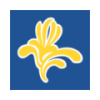
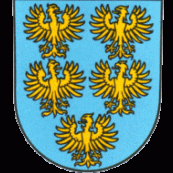
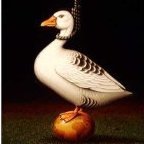
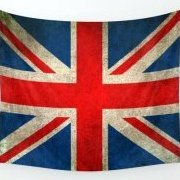


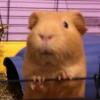
.thumb.jpg.a1642e430572922c3befa12f87efb548.jpg)